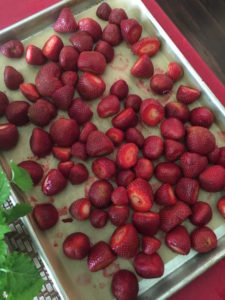The weather is warming up and there is still time to get your gardens prepared. The average date of the last freeze in North Texas is the third week in March so now is the time to get started. I’ve followed Neil Sperry for many years for his expert advice on gardening and so much more on his weekly radio show . I ran across this great online guide titled “Everything you need to know to plant a successful vegetable garden here in North Texas”.
He includes are some very informative tips, check it out.
http://www.star-telegram.com/living/home-garden/neil-sperry/article194406789.html
 Pick the sunniest site. Vegetables need sunlight.
Pick the sunniest site. Vegetables need sunlight.
Provide perfect drainage. No vegetable crop grows well in waterlogged soil.
Start small. Too many gardeners are overly ambitious at the outset, only to become discouraged by their poor results when they can’t maintain all the space they’ve opened up. Choose only crops your family really likes, then specialize in those. You can always expand the second time through, but if you fail you may never come back.
Prepare the soil carefully. Organic matter is your key to success. Add 5 or 6 inches of a blend of sphagnum peat moss, compost, well-rotted manure, finely ground bark mulch and other organic matter and rototill to a depth of 12 inches.
Know the proper planting time for each crop that you’re growing. This is a really big issue! Every crop has a two- or three-week window in which it must be planted. If planted too early it may not survive the cold weather. If planted too late it may not mature before heat sets in. This is one of the main places where people set themselves up to fail.
 Here are some of the main crops and their timing. Late January: English peas, asparagus (perennial), onions. Mid-February: cabbage, broccoli, cauliflower, Brussels sprouts, Irish potatoes. Late February, early March: leaf lettuce, Swiss chard, radishes, carrots, turnips, beets. Late March, very early April: beans, corn, tomatoes, peppers, squash, melons, cucumbers. Mid-April into early May: sweet potatoes, okra, southern peas.
Here are some of the main crops and their timing. Late January: English peas, asparagus (perennial), onions. Mid-February: cabbage, broccoli, cauliflower, Brussels sprouts, Irish potatoes. Late February, early March: leaf lettuce, Swiss chard, radishes, carrots, turnips, beets. Late March, very early April: beans, corn, tomatoes, peppers, squash, melons, cucumbers. Mid-April into early May: sweet potatoes, okra, southern peas.
Choose the best varieties of each crop that you grow. Texas A&M vegetable specialists have lists online. In many cases they will be hybrids selected for productivity, yield, flavor and pest resistance. Many of the old heirloom varieties, tomatoes for example, are notoriously poor producers in Texas conditions. Limit the numbers of those that you try.
Care for your plants regularly. Check them daily once they start growing
Harvest your produce at the peak of maturity. In many cases, that will be before it reaches full size. Cucumbers, okra and summer squash, for example, should be harvested when they’re little more than half their full size. The same goes for carrots, green beans and lettuce leaves, and you harvest broccoli before any of the flower buds actually start to open.
Extend the season by planting fall crops in the same ground. Truth be told, fall vegetable gardens are often more productive than their spring counterparts.
Involve a youngster in your gardening plans. Whether it’s a child, grandchild, niece, nephew or students at a school in your neighborhood, there’s something magical about helping little hands plant big seeds and guiding them in growing vegetables all the way to harvest. It’s something neither you nor they will ever forget.
 Strawberry season is short here in Texas so I decided to head back out to my favorite spot to pick strawberries, which is at Good Earth Organic Farm. The strawberries at Good Earth Organic Farm are plump, juicy, and sweet. This was my third year returning to pick some beautiful sun-ripened berries and I was not disappointed. After spending an afternoon picking those yummy red jewels, I am ready to get into the kitchen to make all types of things from jams and vinaigrette to refreshing smoothies.
Strawberry season is short here in Texas so I decided to head back out to my favorite spot to pick strawberries, which is at Good Earth Organic Farm. The strawberries at Good Earth Organic Farm are plump, juicy, and sweet. This was my third year returning to pick some beautiful sun-ripened berries and I was not disappointed. After spending an afternoon picking those yummy red jewels, I am ready to get into the kitchen to make all types of things from jams and vinaigrette to refreshing smoothies.







